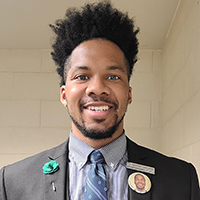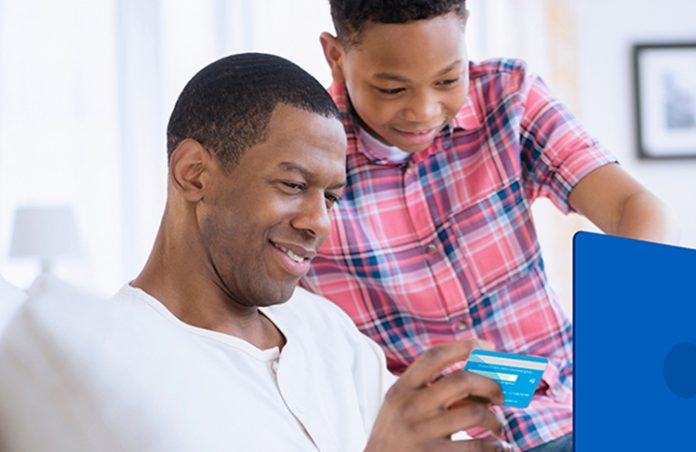Finances FYI – Sponsored Content from JPMorgan Chase & Co.
By Aaron Allen, The Seattle Medium
Wally Webster, a retired banking executive in Seattle, has made it a point to teach his 13-year-old grandson about personal finances and the basic fundamentals of building wealth. Unfortunately, most young people, especially African Americans and other underserved communities, don’t have access to a finance professional to help them understand things like money management, savings and investing.
“I am teaching my grandson financial literacy just using envelopes and having one envelope with a one-dollar amount on it for one thing, another envelope with another dollar amount for another thing and so forth and have him manage what’s in each envelope based on his financial decisions, and the envelopes representing accounts,” says Webster. “If he wants to go and buy popcorn, which is a part of his entertainment, he’ll go and utilize that envelope. If he wants to buy something else, he has to look in a different envelope. So, that’s how I started helping him manage his money.”
Traditionally, many children learn about money through observation. While their parents may teach them how to count money, they may also, often times by default, pass along their own personal money habits, both good and bad, to their kids as well. For example, they observe how their parents spend money, what they prioritize spending their money on, how they pay bills and manage debt, and their approach to savings. When it comes to financial literacy and their children, a few questions parents should ask themselves before talking to their kids about money is what are they teaching their children directly and/or indirectly about finances? And what type of life or quality of life do they want their children to have in the future?”
Webster believes that understanding personal finances and banking literacy at an early age directly relate to the type of life a person will experience as an adult.
“I believe children should be taught financial literacy the day they learn to count,” says Webster. “Financial literacy and responsibility are perhaps the most important thing that they can learn. And the reason why I say that is how they manage their finances will determine the quality of life that they will have.”
“Most people think how much money you make will make that determination, but it is how you manage your money that is more important than how much money you make,” adds Webster. “It is extremely important that once a child learns the fundamental consistency in managing [money] then the next step is to learn the difference between saving and investing.”
In an effort to address the wealth gap that exists in America, Chase Bank has initiated a $30 billion campaign over the next five years to address and advance racial equity across the country. One of the key components of this initiative is the Chase First Banking program. The program, which helps parents teach their teens and kids about money, provides digital tools to help children build safe money habits.
Through the program Chase looks to enhance the banking knowledge and experience of children, particularly in underrepresented communities and provide opportunities to achieve financial equity. According to Anastasia Morgan-Gans, an executive focused on family financial health at Chase, the tools in this program will aide in providing guidance for parents giving them the confidence to teach their children financial literacy. These tools not only allow parents to maintain control over the account and choose where their child can shop, but they also help in setting up savings goals and allow children to manage their money in real-world scenarios.
“These tools can help guide parents,” says Morgan-Gans. “So they can have the confidence to teach kids about bank accounts and spending, it’s like an account with training wheels.”
For centuries, marginalized people in America have been systematically denied the equal opportunity to build generational wealth. Today, there is a concerted effort by advocates and some financial institutions to educate young people on the responsibility and importance of money management.

Branch Mgr., Chase Bank – Renton
Percy Lavon J Etheridge, branch manager of Chase Bank in Renton, says that the Chase First Banking program is very important to the plight and economic growth of our community.
“This is extremely important,” says Etheridge. “It [economic equity] is something that Chase is really trying to tackle and it is something where we know that teaching kids about finance and economics and teaching them how to save is crucial because they’re the future.”
“We [Chase] structured our program around how can we help parents,” Etheridge continued. “Not only to be comfortable with children having accounts but to really maximize the education of children helping them to learn banking.”
Chase First Banking is a free account that provides a debit card for kids ages 6 – 17 that helps families develop healthy financial habits by placing parents in control and offering teens and kids the freedom to learn how to earn, save and spend money.
Through the Chase Mobile app, parents can set amounts, provide allowances and assign chores, pick locations where kids can spend money using a debit card, and help children reach savings goals. Kids interact with the app on their end, too, checking off assigned chores when completed and seeing when their allowance is paid. They can also see how much they can spend and where, as well as their savings goals.
This type of digital tool makes financial literacy discussions easier and brings family money management into the digital age, engaging kids in meaningful ways. In addition to adopting useful tools, it’s important to have ongoing conversations about finances. Morgan-Gans suggests starting with some rules for a family ‘contract’ when it comes to having access to an account:
• I will spend responsibly and discuss what are acceptable purchases with my parent
• I will make a savings goal, discuss it with my parent, and work toward it
• I will not use my debit card on websites or at stores my parent does not approve of
• I will always keep my card in a safe place and discuss the best place to keep it with my parent
• I will not share my PIN number or account number with anyone
• I will not post pictures of my card or app on social media or share them with my friends
• I will never go to an ATM alone and will only use ATMs inside a bank
Webster says that Chase’s program provides a solid foundation for literacy and wealth building that will allow our children to make sound investments and financial decisions in the future.
“I believe what Chase is doing is extremely, extremely important and to be commended,” says Webster. “The savings that Chase is teaching, the management of those savings through a budget and then the investment of those funds is what is going to give them [our future generations] that quality of life.”
You can learn more about Chase First Banking online at https://account.chase.com/banking/first-banking.
This article sponsored by JPMorgan Chase & Co. JPMorgan Chase & Co. is making a $30 billion commitment over the next five years to address some of the largest drivers of the racial wealth divide.
























